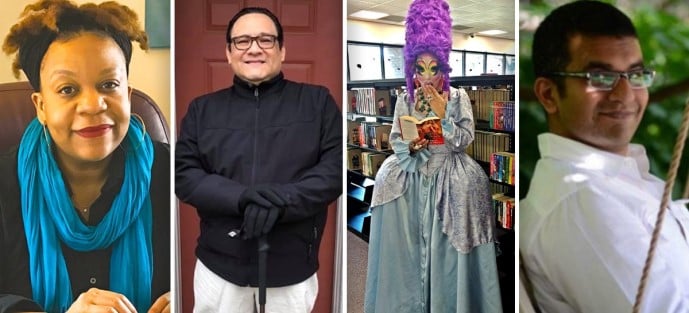The academic library’s role in expanding perspectives
Practical tips for bringing diverse voices into collection development strategies

As more libraries strive to create collections that authentically reflect the identities and perspectives of their communities, the challenge of selecting appropriate resources can be daunting. Drawing from a panel discussion at the 2023 Charleston Conference, this blog offers strategies for curating inclusive collections, especially when time and resources are limited.
Learn from the experiences of Allyson Rodriguez (Director of Collection Strategies, University of Oregon); Amy Pawlowski, (Executive Director, OhioLINK), Carson Williams (Collection Development Librarian, Cornell University) and Derek Marshall (Interim Associate Dean for Research, Faculty Engagement & Campus, Mississippi State University) as they highlight the power of content audits, technology, and thoughtful curation to ensure collections serve every student with the depth and breadth of perspectives they deserve.
Here are the top five takeaways:
-
- Create open channels for student input: Open, ongoing communication with students is key to building a relevant and resonant collection. By actively inviting feedback through online forms, social media or face-to-face conversations, libraries can better understand the materials their patrons value. One innovative approach is using QR codes linked to purchase request forms, making it easy for students to suggest new titles. This simple step empowers students while providing librarians with real-time insights into emerging needs.
- Conduct content audits and dig deeper into subject areas: Content audits are an essential tool for ensuring that a library’s collections reflect the needs of its community. By evaluating specific subjects, material types or demographic representation, audits can reveal areas of imbalance or underrepresentation. For example, it's not enough to have titles on Indigenous materials—it's crucial to ensure those titles are written by authors offering authentic perspectives. Additionally, involving students, faculty and relevant community groups in this process—through focus groups or collaborations with organizations—adds richness and depth, guiding more thoughtful purchasing decisions that better represent a wide spectrum of viewpoints. This comprehensive approach helps libraries identify gaps as well as make more informed and meaningful choices in collection development.
- Engage faculty for broader impact: Building strong partnerships with faculty is essential to expanding the openness of library collections. Faculty can play a vital role by incorporating student voices into their syllabi, ensuring learners engage with a variety of perspectives. Collaborative efforts—such as working together on affordable learning programs and open educational resources (OER)—align collection development with curricular needs, helping to ensure a diverse range of materials are integrated into academic life.
- Make the library more accessible: For many students, particularly first-generation college students, navigating the library can be daunting. Libraries can foster a more inclusive environment by offering clear, accessible guidance—whether through physical maps, digital wayfinding tools, or personalized assistance. By meeting students where they are and simplifying the process of finding and using resources, libraries become not only a space for knowledge but also a welcoming gateway to learning.
- Leverage technology to highlight a spectrum of opinions: In today’s digital age, libraries have unprecedented opportunities to highlight diverse voices through technology. Enhancing the visibility of collections online, curating themed lists or hosting virtual events around important topics are all impactful ways to engage students. Digital exhibits, for example, can breathe new life into the collection and offer students fresh opportunities to discover materials that resonate with their academic and personal interests.
Ensuring every student feels seen
Incorporating different voices into library collections is a continuous effort but one that is deeply rewarding. By prioritizing intentional strategies, fostering open communication and conducting regular content audits, libraries can build collections that not only reflect but also celebrate the richness of their communities. The goal is more than just expanding the collection; it’s about creating a space where every student feels represented and valued, knowing their perspectives are an essential part of the academic fabric.
How ProQuest can help
At ProQuest™, part of Clarivate™, we understand the importance of building collections that authentically represent the voices and experiences of diverse user communities. Through our comprehensive range of ebooks and digital resources, we help libraries access content from a wide array of authors, viewpoints and cultural perspectives:
-
- Tools such as Title Matching Fast enable libraries to conduct content audits and make in-demand titles more accessible to a wider number of students.
- Curated content lists, including Curated Topics and LibLists, enable libraries to identify collection gaps and discover new materials aligned with their communities' unique needs.
- Our flexible acquisition models make it easier for libraries to build their collections with both breadth and depth, ensuring they reflect the academic and personal needs of their users.
- Our in-house Collection Development librarians can offer curated recommendations and insights to help libraries strategically expand their collections with high-quality content.
By leveraging ProQuest’s vast resources and innovative technologies, libraries can expand their collections in ways that honor every student's identity and ensure they feel represented in the academic conversation.



